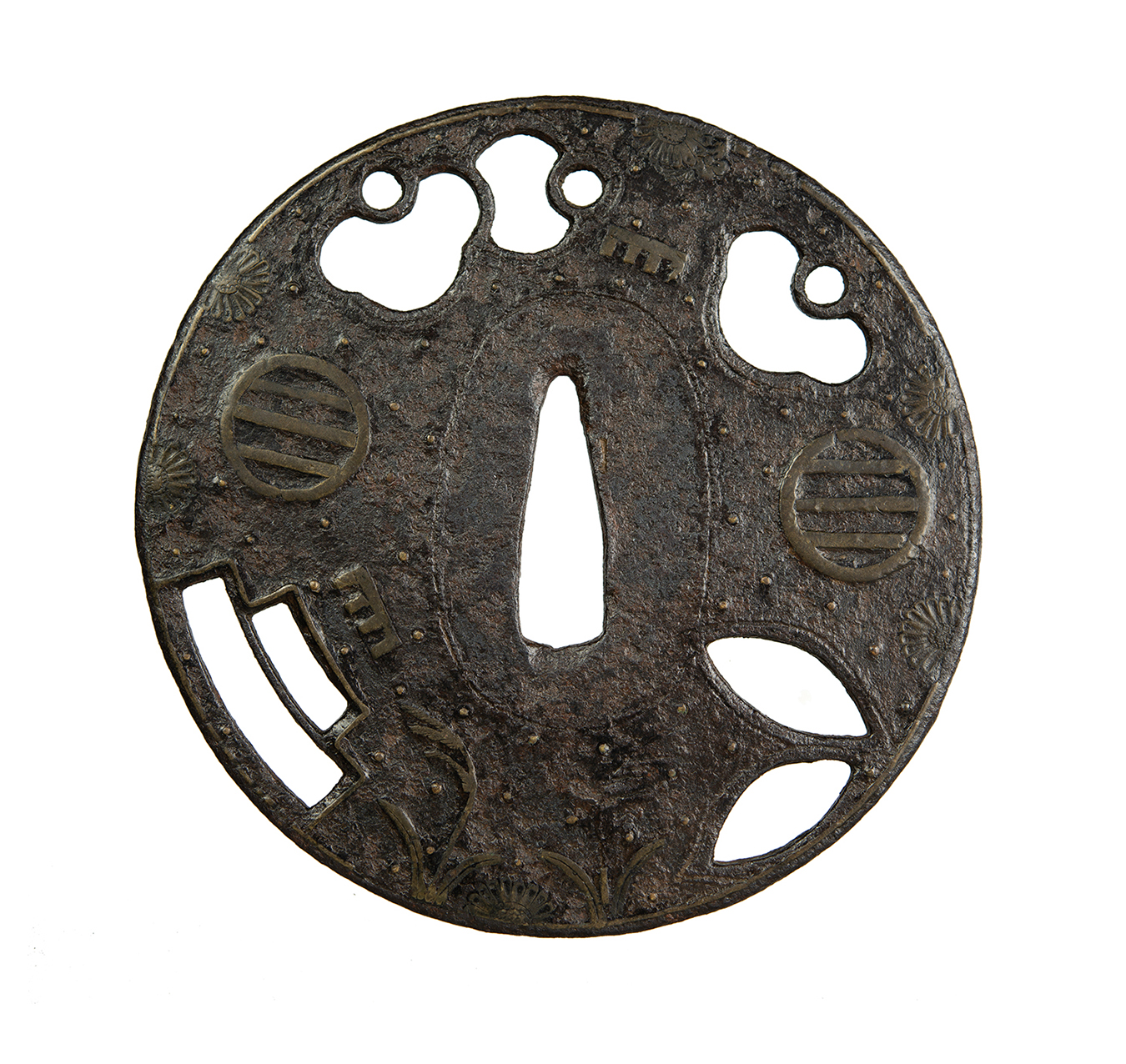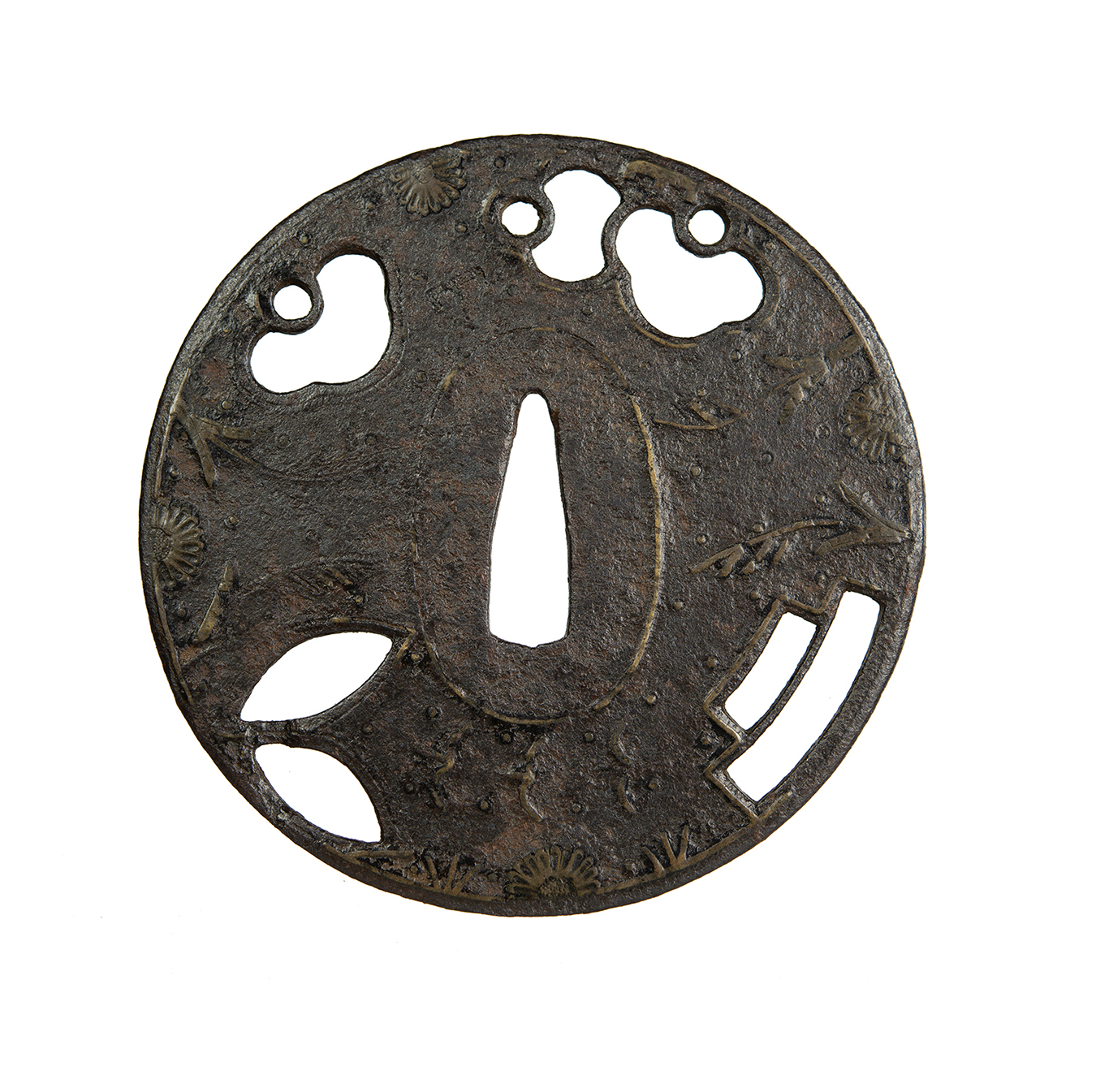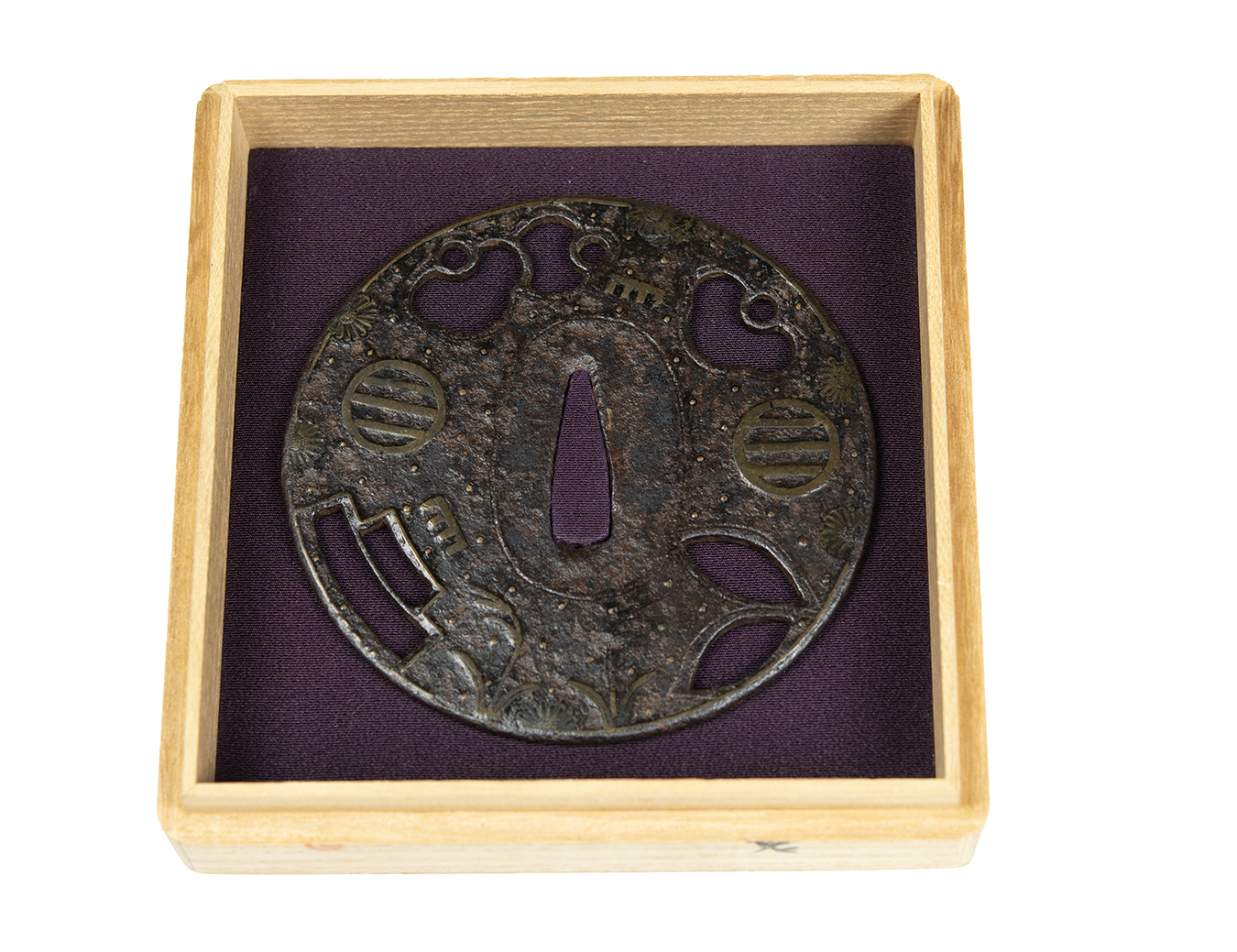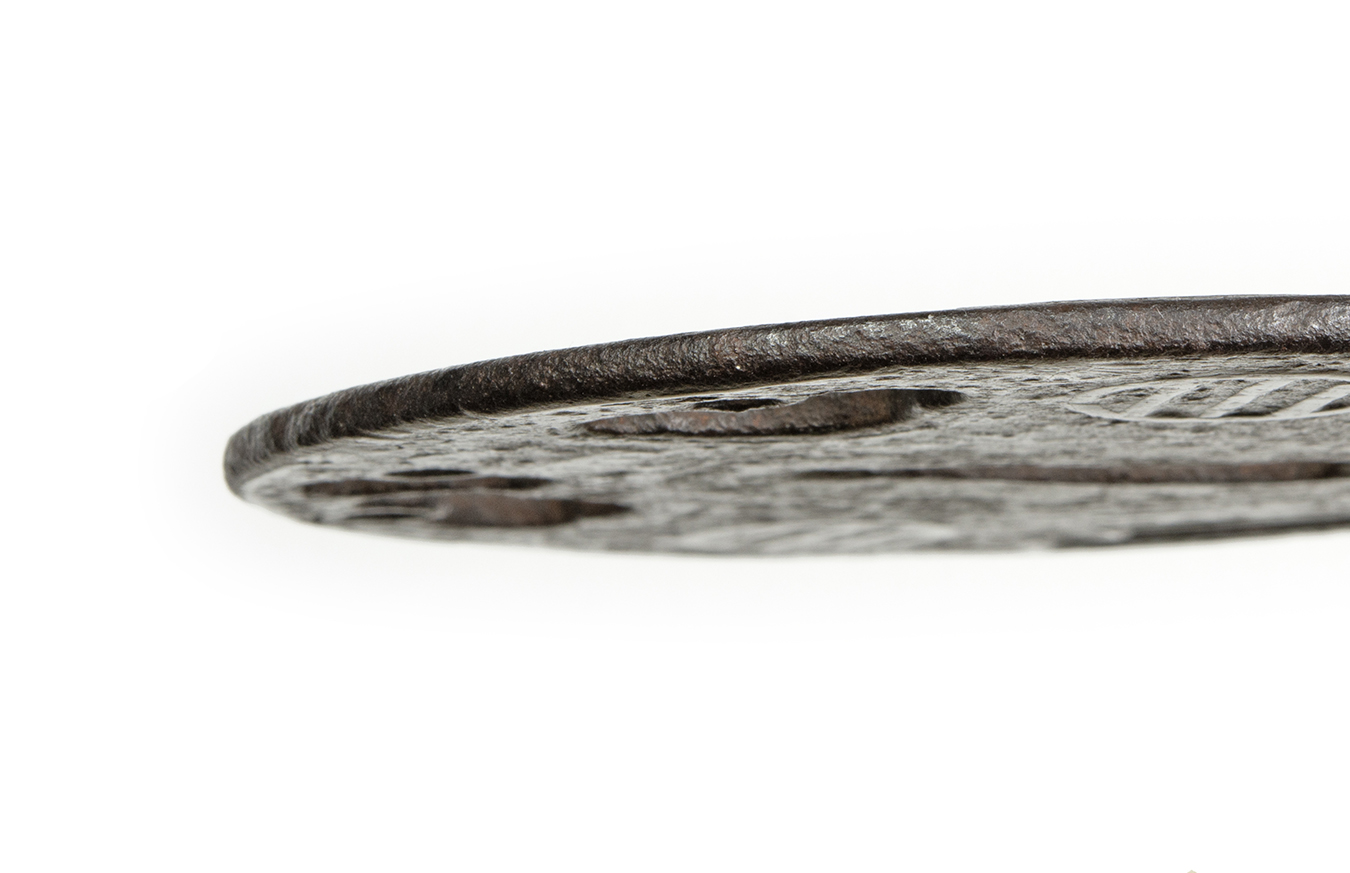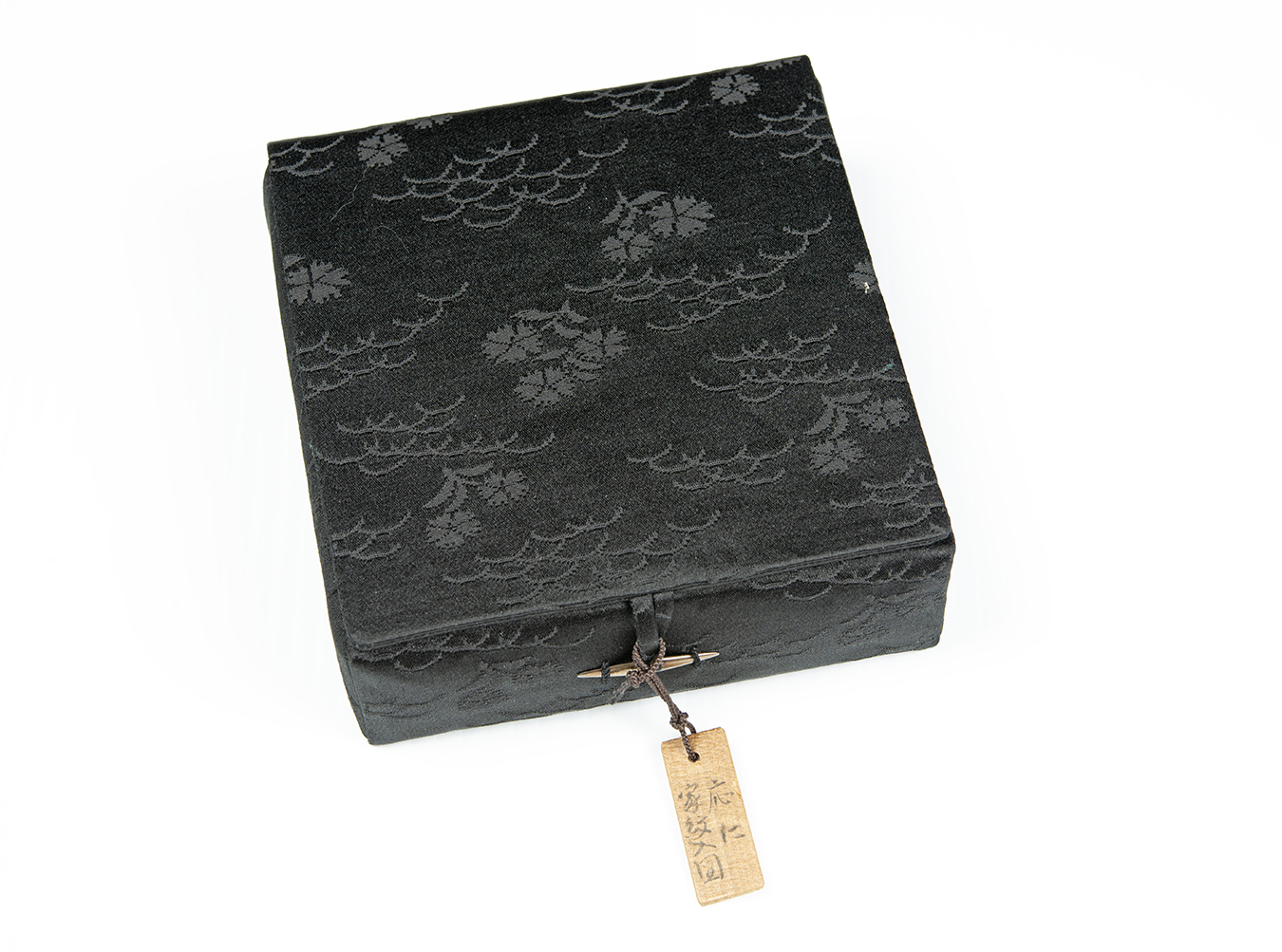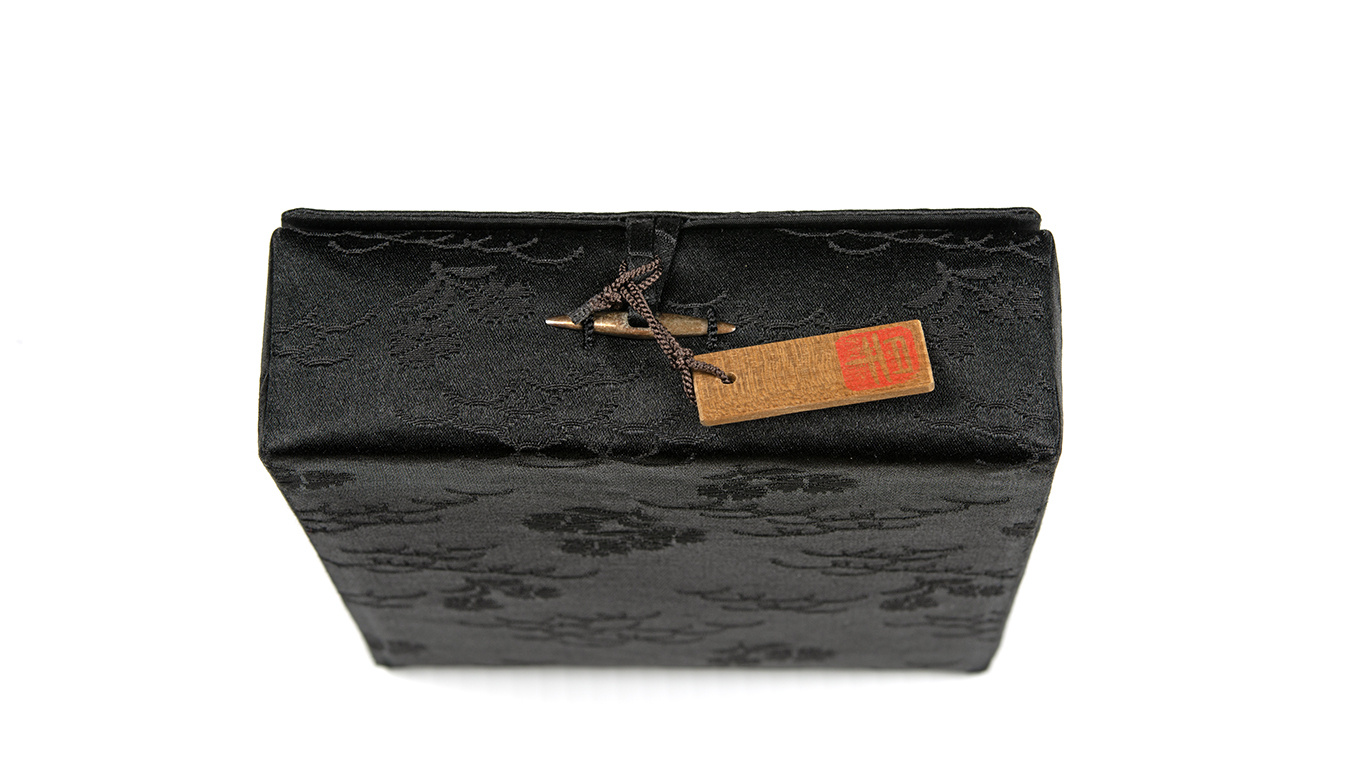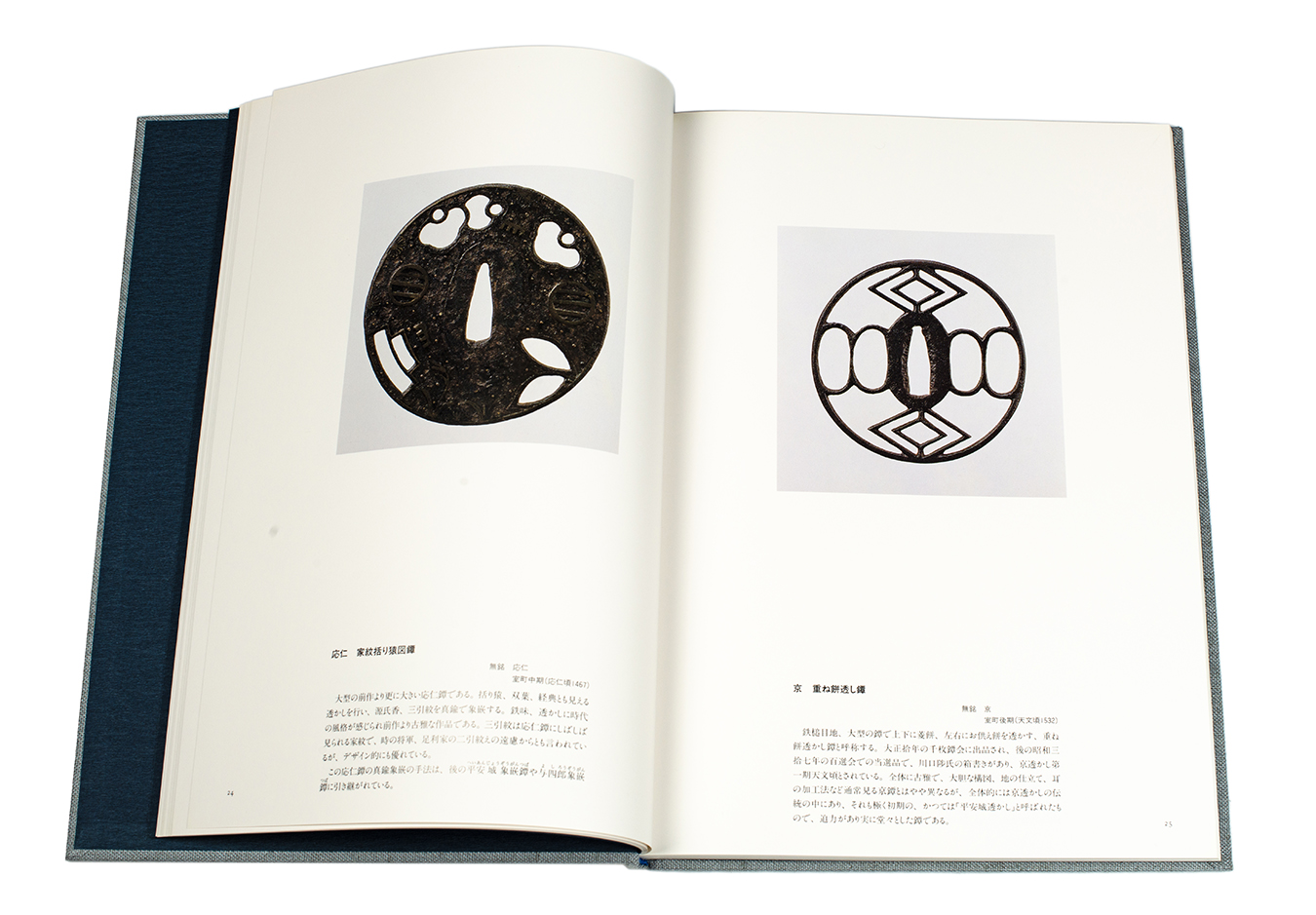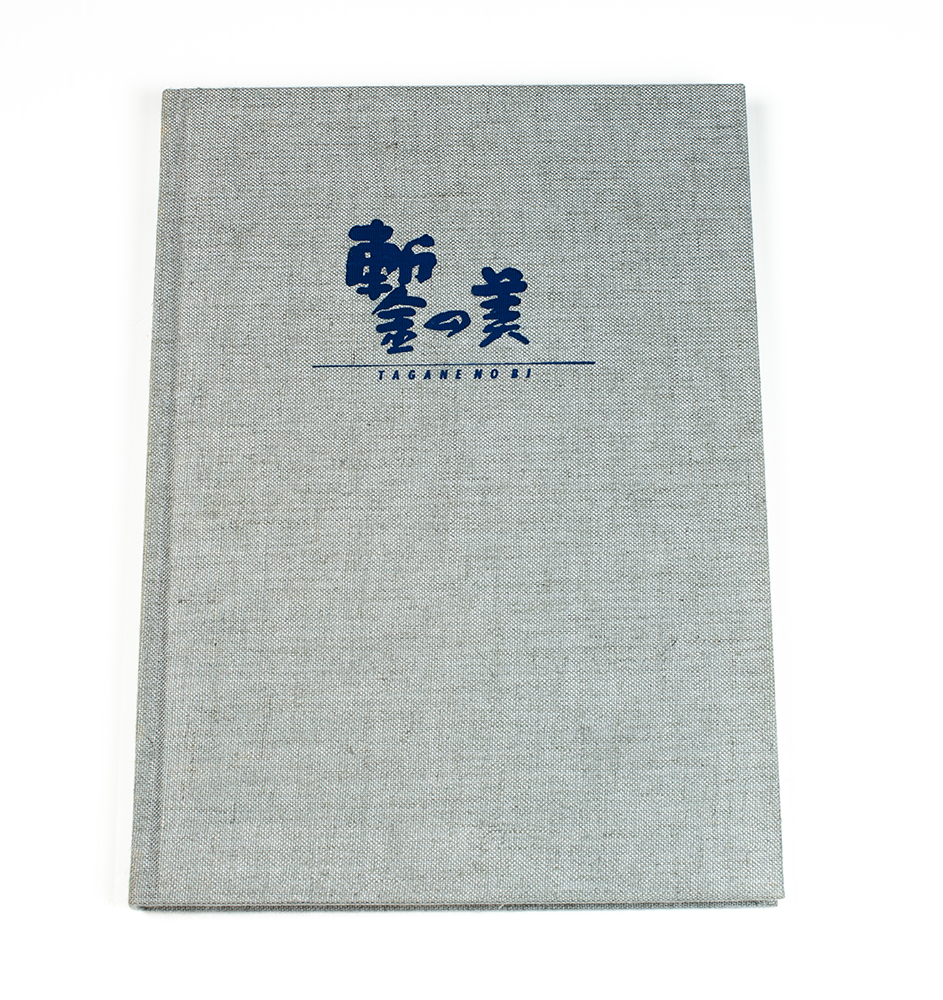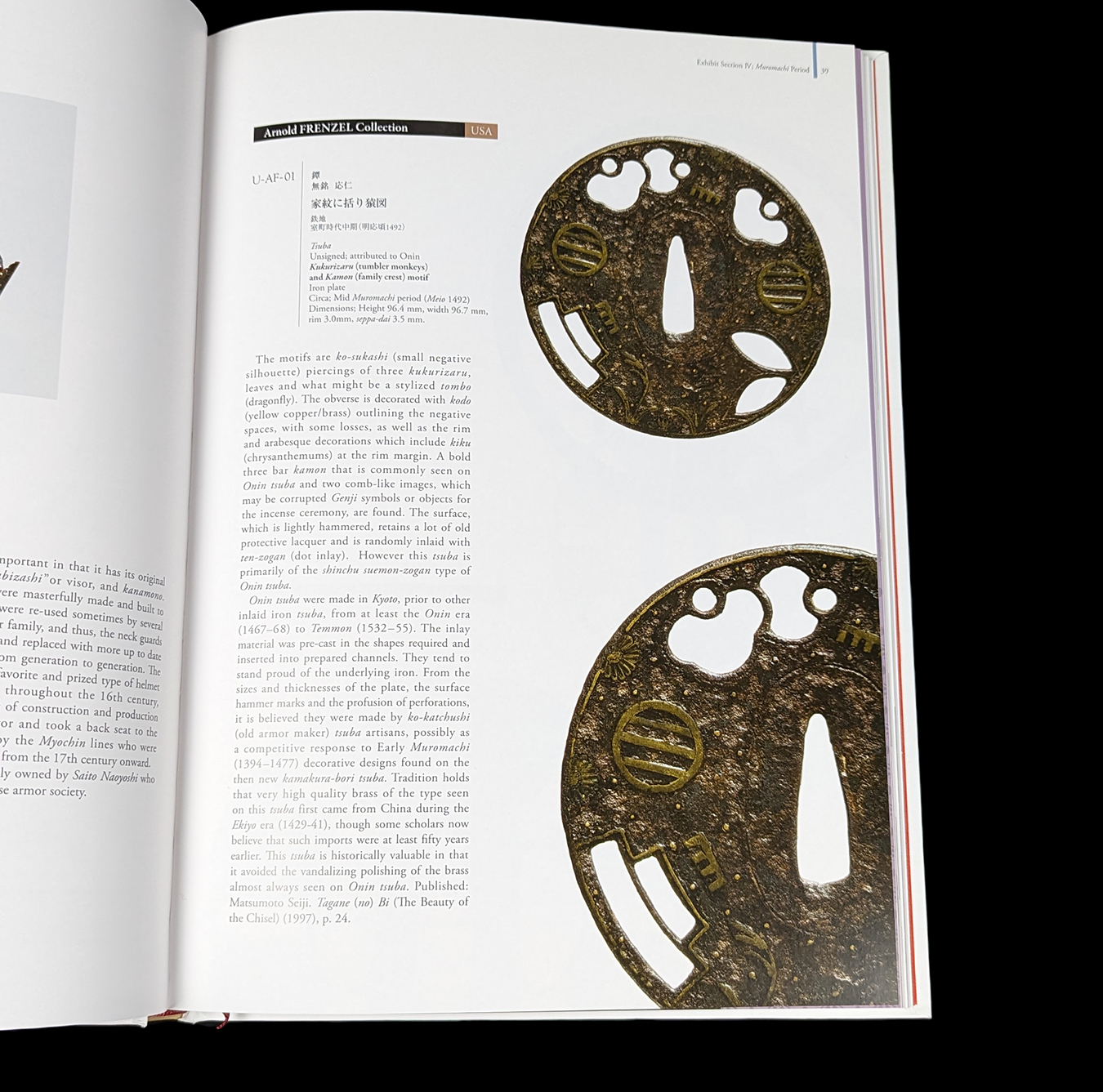応仁鐔
Onin Tsuba
Published: Mr. Matsumoto Seiji. Tagane (no) Bi 1997
Published: Prof. Arnold Frenzel Kokusai Tosogu Kai 2012
Dimensions: 9.64 cm x 9.67 cm, 3 mm mimi 3.5 mm seppa dai
An immensely large Onin tsuba from the Muromachi period. This is an important example. This tsuba was once in the collection of Mr. Matsumoto Seiji and published in his book Tangne no Bi in 1997. It was later in the collection of Mr. Nick Nakamura, the Chairman of the Kokusai Tosogu Kai and followed to Mr Arnold Frenzel, one of the leading sword scholars in the Western World. Below is the fulsome description written by Prof. Frenzel for this tsuba's publication in the 2012 Kokusai Tosogu Kai catalog:
Unsigned; attributed to Onin Kukurizaru (tumbler monkeys)
and Kamon (family crest) motif Iron plate
Circa: Mid Muromachi period (Meio 1492)
The motifs are ko-sukashi (small negative silhouette) piercings of three kukurizaru, leaves and what might be a stylized tombo (dragonfly). The obverse is decorated with kodo (yellow copper/brass) outlining the negative spaces, with some losses, as well as the rim and arabesque decorations which include kiku (chrysanthemums) at the rim margin. A bold three bar kamon that is commonly seen on Onin tsuba and two comb-like images, which may be corrupted Genji symbols or objects for the incense ceremony, are found. The surface, which is lightly hammered, retains a lot of old protective lacquer and is randomly inlaid with ten-zogan (dot inlay). However this tsuba is primarily of the shinchu suemon-zogan type of Onin tsuba.
Onin tsuba were made in Kyoto, prior to other inlaid iron tsuba, from at least the Onin era (1467-68) to Temmon (1532-55). The inlay material was pre-cast in the shapes required and inserted into prepared channels. They tend to stand proud of the underlying iron. From the sizes and thicknesses of the plate, the surface hammer marks and the profusion of perforations, it is believed they were made by ko-katchushi (old armor maker) tsuba artisans, possibly as a competitive response to Early Muromachi (1394-1477) decorative designs found on the then new kamakura-bori tsuba. Tradition holds that very high quality brass of the type seen on this tsuba first came from China during the Ekiyo era (1429-41), though some scholars now believe that such imports were at least fifty years earlier. This tsuba is historically valuable in that it avoided the vandalizing polishing of the brass almost always seen on Onin tsuba. Published: Matsumoto Seiji. Tagane (no) Bi (The Beauty of the Chisel) (1997), p. 24.
SOLD
(Books shown not included)
